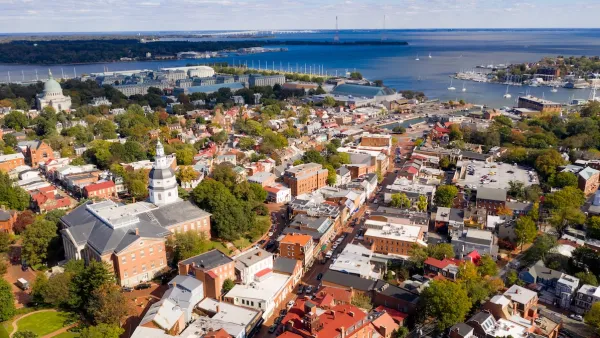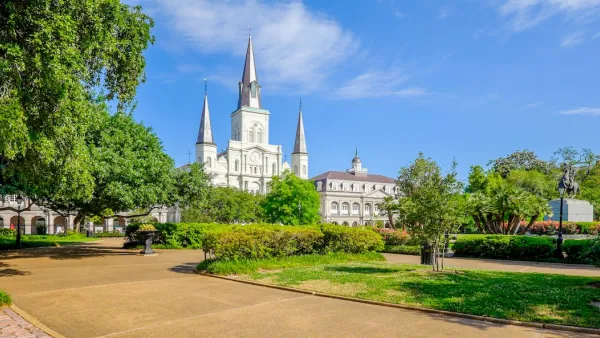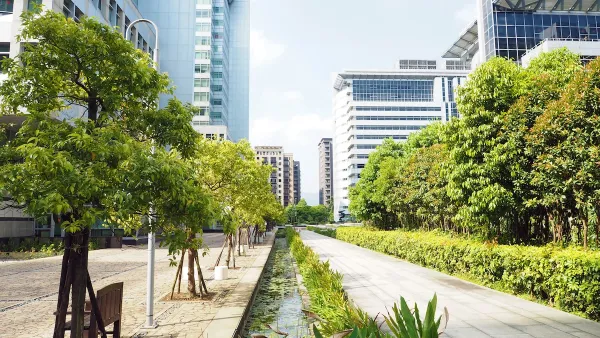More and more evidence has emerged in recent years about the many benefits of trees in urban environments. Every now and then, however, a study finds evidence that tress might not always be as benevolent as they seem.

Rob MacKenzie shares insight into new research that might complicate assumptions about the role of trees in urban environments. The problem, writes MacKenzie: "some recent studies have suggested that trees may in fact worsen urban air quality by trapping pollutants at street level."
It's not that simple, of course, and Mackenzie insists that a closer look at the evidence "can help us come to a more nuanced understanding of the impacts of trees on our urban environment."
It all has to do with effect of the cocktail of buildings, structures, and landscapes that make up the city, of which trees have a unique role to play. "Trees affect the urban environment in several subtle ways. From altering air flows, to collecting pollution deposits, to affecting the chemical make up of the atmosphere, their impacts are both pervasive and difficult to pinpoint," writes MacKenzie.
So while MacKenzie goes into more detail about the several different pollution processes tress take part in, no studies have so far managed to put all the pieces of a city together. In lieu of a comprehensive model, MacKenzie uses the article as an opportunity to suggest strategies for piecing together different studies to create a more complete picture.
For more on the complex questions posed by the role of trees in the urban environment, an earlier article by John Gallagher first raised some of the same discussion points.
FULL STORY: Do trees really help clear the air in our cities?

National Parks Layoffs Will Cause Communities to Lose Billions
Thousands of essential park workers were laid off this week, just before the busy spring break season.

Retro-silient?: America’s First “Eco-burb,” The Woodlands Turns 50
A master-planned community north of Houston offers lessons on green infrastructure and resilient design, but falls short of its founder’s lofty affordability and walkability goals.

Delivering for America Plan Will Downgrade Mail Service in at Least 49.5 Percent of Zip Codes
Republican and Democrat lawmakers criticize the plan for its disproportionate negative impact on rural communities.

Test News Post 1
This is a summary

Test News Headline 46
Test for the image on the front page.

Balancing Bombs and Butterflies: How the National Guard Protects a Rare Species
The National Guard at Fort Indiantown Gap uses GIS technology and land management strategies to balance military training with conservation efforts, ensuring the survival of the rare eastern regal fritillary butterfly.
Urban Design for Planners 1: Software Tools
This six-course series explores essential urban design concepts using open source software and equips planners with the tools they need to participate fully in the urban design process.
Planning for Universal Design
Learn the tools for implementing Universal Design in planning regulations.
EMC Planning Group, Inc.
Planetizen
Planetizen
Mpact (formerly Rail~Volution)
Great Falls Development Authority, Inc.
HUDs Office of Policy Development and Research
NYU Wagner Graduate School of Public Service





























